 June 24, 2021 John E. Ross, KD8IDJ, Editor
| ||||||
It's Field Day -- June 26 - 27! ARRL Field Day is here. Where will you get on the air? A park or public place with your radio club, from your favorite campsite, or from home? This week on the floor of the US House, Representative Debbie Lesko of Arizona recognized radio amateurs, ARRL, and ARRL Field Day. ARRL is also pleased to note state and local proclamations and resolutions taking note of Field Day as part of broader recognitions of amateur radio's value to the community. However you participate this year, ARRL encourages you to enjoy Field Day and to keep safety in mind! Share your photos and stories all weekend on the ARRL Field Day Facebook group or via the ARRL Soapbox. ARRL Announces Partnership with Maglite ARRL The National Association for Amateur Radio and Mag Instrument, the US manufacturer of the MAGLITE® Flashlight have announced they have formed a partnership based on common interests in equipping people to be prepared for emergencies and to serve their communities in extreme situations such as natural disasters. ARRL members expand the reservoir of trained operators and technicians in radio communications and radio technology, and provide public service through the ARRL Amateur Radio Emergency Service® (ARES®). Maglite is the leading maker of US-manufactured "Amateur radio operators, or 'hams,' help people in times of difficulty, often by supporting emergency communications when critical infrastructure is damaged, and by aiding first responders' need to keep connected," said Anthony Maglica, Founder, Owner, and CEO of MAG Instrument Inc. "We manufacture a product that has been used in public safety for over 40 years, and we are very supportive of the incredible dedication of radio amateurs, so culturally this is a great alliance for both brands." "ARRL is delighted that Maglite recognizes the service and skill of ARRL members. This partnership will help us introduce amateur radio to more people," said David Minster, NA2AA, ARRL CEO. Read an expanded version. FCC Seeks Comments in Proceeding Involving 70 and 5 Centimeters The FCC is soliciting a second round of comments on whether to authorize commercial space entities to obtain licenses for frequencies used exclusively during space launch activities. The proposals include parts of the 70-centimeter (420 - 430 MHz) and 5-centimeter (5650 - 5925 MHz) bands. The federal government has allocated this spectrum on a primary basis and routinely uses it during space launches, but commercial space companies must obtain short-term Special Temporary Authority (STA) authorizations from the FCC to use it for the same purpose. The last decade has seen a dramatic increase in commercial space launches. In March, the Federal Aviation Administration (FAA) streamlined its commercial space launch and reentry licensing The proposals would allow private commercial space companies to obtain regular FCC licenses instead of launch-specific STAs in a number of bands, including 420 - 430 MHz and 5650 - 5925 MHz. The federal government, including the US Department of Defense, is the primary user of both bands. Amateur operations are allocated on a secondary basis. The FCC again seeks comment on whether it should authorize use by commercial space launch entities limited to space launch uses identical to those employed by the federal government on this spectrum. Primary federal users heavily employ the 70-centimeter segment for radiolocation applications. Frequencies in the 420 - 430 MHz segment can also be used during space launches to send a flight self-destruct signal if a launch goes off course and poses danger to a populated area. The Commission's 2013 proposal, repeated in 2021, would permit use restricted to flight termination during launches by commercial space launch companies. Primary federal users also make use of 5650 - 5925 MHz for radiolocation applications, with channels used during launches for radar tracking. The Commission proposes to permit use by commercial entities similarly limited to use for radar tracking of launch vehicles. The Commission notes in its Further Notice of Proposed Rulemaking that since 2013, commercial entities have become established in space launch operations that were formerly the province of NASA. "To support these commercial space ventures, entities such as the New Mexico Spaceport Authority, the Virginia Commercial Space Flight Authority, and the Houston Airport System have established non-Federal spaceports," the FCC said, noting that five bands -- including 420 - 430 MHz and 5650 - 5925 MHz -- are commonly used for communication with and tracking of launch vehicles. The Commission noted, however, that several commercial space launch providers indicated that they do not use either band for their operations. The FCC concluded, "Given the limited current use of these bands during space launches [by commercial space entities], we are not convinced that there is need for new allocations for either band." Comments are due on or before July 12, 2021; reply comments are due on or before August 9, 2021. Read an expanded version. ARRL Podcasts Schedule
The On the Air and Eclectic Tech podcasts are sponsored by Icom. Both podcasts are available on iTunes (iOS) and Stitcher (Android), as well as on Blubrry -- On the Air | Eclectic Tech. Youngsters On The Air First-Round Contest Claimed Results Posted, Next Round is July 18 The Youngsters On The Air (YOTA) Contest's first round is complete and the claimed results have been posted on the YOTA website, with final results coming soon. Worldwide participation was very good. In the YOTA-class categories, more than 100 entries were from contesters as young as 7 years old, and three entered as shortwave listeners (listen only). There were more than 600 entries of participants above the age of 25, with the oldest participant at age 87.
The next round will take place on July 18, 1000 - 2159 UTC. The event includes a 6-hour category (this is a change in date from the previously announced July 17). "Everyone in the ham radio community can take part; it takes place three times per year and only lasts 12 hours," said IARU Region 1 Youth Working Group Chair Philipp Springer, DK6SP. The event includes eight entry categories. Operation is on 80, 40, 20, 15, and 10 meters, CW or SSB. The contest exchange is the operator's age, and different ages also serve as multipliers during the contest. Also, the younger the operator, the more points per contact. Visit the YOTA Contest page for more information. If the FAQ doesn't address your particular concern, you can email the YOTA Contest Committee. IARU Attends ITU Wireless Power Transmission Sessions The International Amateur Radio Union (IARU) represented the Amateur Service at a recent International Telecommunication Union (ITU) virtual meeting on the topic of wireless power transmission (WPT), attended by some 350 delegates. ITU Working IARU contribution centered on proposing amendments to material submitted by other delegations and a new annex that documents measurements of typical amateur signal levels, comparing these to test data from the US on non-beam WPT emission levels and to suggested limits. "Most of the discussions on the detail were resolved with a degree of compromise, and the latest drafts will be attached to the chairman's report for the meeting," IARU Region 1 reported. Remaining technical issues include:
In terms of the E-field sensitivity to WPT emissions, the proposed work plan submitted by IARU to the European Commission, for WPT-EV tests in the Joint Research Centre, included proper E- and H-field measurements. "IARU member-society DARC [Germany] has made good progress with the rollout of its ENAMS automated noise measurement system, and IARU is now able to draw heavily on that data," IARU Region 1 said. "The WPT Emissions document has been under discussion for some time. Here, there is no agreement yet on whether this should be a Report or a Recommendation, and the work has been carried forward to the next meeting in November 2021." Discussion on so-called "beam" WPT covered a range of issues, IARU has provided extensive input on the potential impact on radio communications resulting from spurious emissions from WPT devices. Given the planned density of WPT systems for electric vehicles operating in the 79 - 90 kHz range, widespread interference could occur to Amateur Service stations in the vicinity of WPT systems. ARRL Learning Network Webinars Visit the ARRL Learning Network (a members-only benefit) to register, check on upcoming webinars, and to view previously recorded sessions. Antenna Zoning: Special six-part webinar series: Antenna Zoning for the Radio Amateur
Designing Coiled Coax "Ugly" Baluns: John Portune, W6NBC / Thursday, July 8, 2021 @ 8 pm EDT (0000 UTC on Friday July 9) "Coiled coax baluns" is a familiar term in the world of ham radio, but not many hams know how to design them for maximum efficiency. The internet offers many designs and can be confusing, so this presentation will help you learn (1) the main function of a balun; (2) calculating, and not guessing, at the amount of coil needed, and (3) self resonance and frequency limitations. ARRL members may register for upcoming presentations and view previously recorded Learning Network webinars. ARRL-affiliated radio clubs may also use the recordings as presentations for club meetings, mentoring new and current hams, and discussing amateur radio topics. These Learning Network presentations are sponsored by PreppComm.
The ARRL Learning Network schedule is subject to change. 3Y0J Bouvet Island DXpedition Team Hasn't Given Up The Daily DX has reported that the 3Y0J DXpedition team is still hoping to have a go at the island in 2023. The DXpedition team had planned to travel to Bouvet via the RV Braveheart, owned by Nigel "Since the cancellation of 3Y0J, we have been working closely with Nigel Jolly to form a new plan, with a new owner of Braveheart and a revised payment plan that enables Nigel Jolly to continue managing Braveheart and will keep it available for DXpeditions for years to come," said the announcement from DXpedition co-leader Paul Ewing, N6PSE. "We are working out the details of this plan and hope to have some very positive news very soon. We have not given up!" The Intrepid-DX Group announced earlier this month that it has canceled its long-anticipated DXpedition to Bouvet. Jolly told the DXpedition that the Braveheart was being sold and he was canceling its contract for the 3Y0J voyage. IARU Region 1 Workshop Aims to Determine Where Amateur Radio Will Be in a Decade The IARU Region 1 Workshop on the Future of Amateur Radio continued on June 12 with a focus on strengths, weaknesses, opportunities, and threats (SWOT). Member-societies prepared a SWOT analysis. IARU Region 1 said member-societies expressed many common issues but also differences, "dependent on the particular environment in which the society operates and its geographical location." Strengths identified included strong community, while weaknesses included motivation and capability within the amateur community. Growing the pool of potential licensees was viewed as an opportunity, while increasing noise levels was among the "I am pleased that we now have the program under way, and have completed the first step in our work," Beattie said. "The overall program is an important process to take an honest look at amateur radio today and refocus us all on the priorities for the future." Beattie said that building on the self-reflection questionnaire that member-societies considered last year, Region 1 now has a baseline of strengths, weaknesses, opportunities, and threats looking forward. "Our next steps will be to consider where we would like amateur radio to be in, say, 10 years' time and to work through the steps and the programs that will help take it there," said Beattie. "We are at a time of enormous change in the environment for amateur radio and this represents a big challenge for IARU and its member-societies. With the commitment of our member-societies through this workshop program, I believe we can rise to that challenge." IARU Region 1 said workshop participants are now considering the output from the June 12 session and formulating discussion points regarding the future shape of amateur radio ahead of the final workshop session this October in Serbia. -- Thanks to IARU Region 1 Amateur Radio in the News ARRL Public Information Officers, Coordinators, and many other member-volunteers help keep amateur radio and ARRL in the news.
Share any amateur radio media hits you spot with us. W1AW/KL7 to Serve as ARRL Headquarters Station for IARU Event W1AW/KL7 will be in Alaska to serve as the ARRL Headquarters (HQ) station for the International Amateur Radio Union (IARU) HF World Championship competition on July 10 - 11. To provide radio amateurs an opportunity to work W1AW, as well as the state of Alaska, use of NU1AW, the IARU Headquarters station, will be active as NU1AW/5, in a multioperator distributed operation from the ARRL West Gulf Division (Texas and Oklahoma). NU1AW/5 will be on CW and SSB, 1.8 - 28 MHz. W1AW/KL7 and NU1AW will be the only US HQ stations active. IARU President Tim Ellam, VE6SH, will be giving out the AC (Administrative Council) multiplier, along with new IARU Secretary Joel Harrison, W5ZN. Here is a growing list of IARU HQ stations, courtesy of Bob, N6TV, and Joe, OZ0J. -- Thanks to The Daily DX and The ARRL Contest Update 13 Colonies Special Event Set for July 1 - 7 The 13th running of the popular 13 Colonies Special Event will take place July 1 - 8. A series of 1 × 1 call signs (K2A - K2M) will represent each of the original colonies in North America. The event begins This year, some French stations will be joining, in recognition of the French Navy's importance in the 1700s as part of the France-Britain global competition. TM13COL will be a bonus station, as will GB13COL and WM3PEN in Philadelphia, Pennsylvania, named after land-grant grantee William Penn, the colony's founder. Of course, Philadelphia is where the US founding fathers met. Last year, the Special Event's 13 stations made 202,000 contacts. Each QSL card will be different, including the three bonus stations, each bearing a representative image of a ship. Announcements
SAQ in Sweden to Conduct Annual Alexanderson Day Transmission SAQ, the call sign of the vintage Alexanderson alternator transmitter in Grimeton, Sweden, will conduct its annual Alexanderson Day transmission on Sunday, July 4. The CW transmission will be on 17.2 Startup and tuning for the first SAQ transmission will take place at 0830 UTC, with a message transmission to follow at 0900 UTC. Startup and tuning for the second SAQ transmission will take place at 1130 UTC, with a message transmission to follow at 1200 UTC. Both events will be livestreamed on the Alexander SAQ Grimeton Association YouTube channel. The K7RA Solar Update Tad Cook, K7RA, Seattle, reports: The average daily sunspot number was 14 this reporting week (June 17 - 23), essentially unchanged from last week's 13.9. Average daily solar flux increased from 75.2 to 79.3. Geomagnetic indicators were quieter. Average planetary A index declined from 9.6 to 5.3, and average middle latitude A index dropped Predicted solar flux is 82 on June 24; 85 on June 25 - 30; 80, 78, and 78 on July 1 - 3; 75 on July 4 - 7; 78 on July 8 - 11; 75 on July 12 - 16; 78 on July 17 - 22; 75 on July 23 - 25, and 78 on July 26 - 30. Predicted planetary A index is 8 on June 24; 5 on June 25 - July 3; 12 on July 4; 5 on July 5 - 8; 8 on July 9 - 10; 5, 15, and 12 on July 11 - 13; 5 on July 14 - 20; 8 on July 21, and 5 on July 22 - 30. Sunspot Group 2833 is about to rotate over the sun's western horizon, but I see promising activity around and beyond the eastern horizon when viewing the STEREO mission images and this site to see the emerging activity. Check the 2300 UTC June 22 solar flux reading from the Dominion Astrophysical Observatory in Canada and note that the value jumped way up to 104.5. The official solar flux for that day was the noon reading, 80.8 at 2000 UTC. Sunspot numbers for June 17 - 23 were 12, 24, 15, 13, 11, 12, and 11, with a mean of 14. The 10.7-centimeter flux was 85, 77, 77.1, 76.4, 79.1, 80.8, and 79.7, with a mean of 79.3. Estimated planetary A indices were 7, 7, 4, 4, 4, 7, and 4, with a mean of 5.3. Middle latitude A index was 9, 8, 5, 4, 3, 8, and 6, with a mean of 6.1. A comprehensive K7RA Solar Update is posted Fridays on the ARRL website. For more information concerning radio propagation, visit the ARRL Technical Information Service, read "What the Numbers Mean...," and check out K9LA's Propagation Page. A propagation bulletin archive is available. For customizable propagation charts, visit the VOACAP Online for Ham Radio website. Share your reports and observations. Just Ahead in Radiosport
Upcoming ARRL Section, State, and Division Conventions Many conventions and hamfests have been canceled or postponed due to the coronavirus pandemic. Check the calendar of canceled events on the ARRL website.
Find conventions and hamfests in your area. ARRL -- Your One-Stop Resource for Amateur Radio News and Information. . .
Subscribe to...
Free of charge to ARRL members...
| ||||||
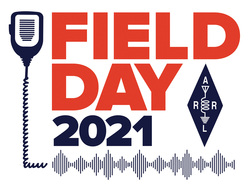 A temporary rule waiver for 2021 permits Class D (home) stations to work all other Field Day participants, with a 150 W power limit on Class D and Class E stations.
A temporary rule waiver for 2021 permits Class D (home) stations to work all other Field Day participants, with a 150 W power limit on Class D and Class E stations..jpg) high-quality flashlights that have a deserved reputation for toughness and durability.
high-quality flashlights that have a deserved reputation for toughness and durability..jpg) regulations. In April, the FCC adopted some of its proposals from 2013 and solicited additional comment in a
regulations. In April, the FCC adopted some of its proposals from 2013 and solicited additional comment in a .jpg) The latest episode of the On the Air podcast (Episode 18): ARRL Field Day is this weekend! Feed your excitement -- and your knowledge -- with this episode's advice on how to enjoy one of the most popular operating events of the year.
The latest episode of the On the Air podcast (Episode 18): ARRL Field Day is this weekend! Feed your excitement -- and your knowledge -- with this episode's advice on how to enjoy one of the most popular operating events of the year..jpg) The latest edition of Eclectic Tech (Episode 36) features a discussion of the current state of Digital Radio Mondiale, the approaching FCC deadline for analog TV broadcasters, and an interview with John Stanley, K4ERO, about some of the potential downsides of the rise of Cycle 25.
The latest edition of Eclectic Tech (Episode 36) features a discussion of the current state of Digital Radio Mondiale, the approaching FCC deadline for analog TV broadcasters, and an interview with John Stanley, K4ERO, about some of the potential downsides of the rise of Cycle 25.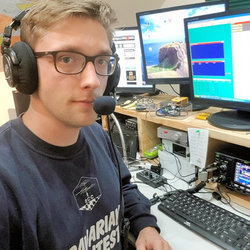
.jpg) Party 1A Working Group WG1A2 was of most relevance to IARU, covering the topic of WPT. The focus is on WPT's impact on the radio spectrum.
Party 1A Working Group WG1A2 was of most relevance to IARU, covering the topic of WPT. The focus is on WPT's impact on the radio spectrum. including amendments to the proposed frequencies (none are below 800 MHz). "Sadly, many proposed frequencies fall in spectrum which the Amateur Service shares with other services," IARU said. "However, given the nature of the technology and the directivity of amateur antennas in these frequency ranges, the prospect of coexistence seems quite good."
including amendments to the proposed frequencies (none are below 800 MHz). "Sadly, many proposed frequencies fall in spectrum which the Amateur Service shares with other services," IARU said. "However, given the nature of the technology and the directivity of amateur antennas in these frequency ranges, the prospect of coexistence seems quite good." Part 6. The Hearing: Wednesday, June 30, 2 PM EDT (1800 UTC)
Part 6. The Hearing: Wednesday, June 30, 2 PM EDT (1800 UTC)  Jolly, K6NRJ.
Jolly, K6NRJ..JPG) threats. IARU Region 1 President Don Beattie, G3BJ, chaired the June 12 gathering, which involved some 34 IARU Region 1 member-societies.
threats. IARU Region 1 President Don Beattie, G3BJ, chaired the June 12 gathering, which involved some 34 IARU Region 1 member-societies.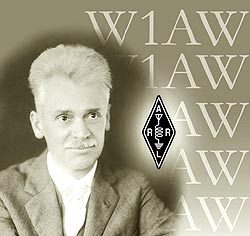 W1AW/KL7 has been authorized from 0000 UTC on July 8 to 2359 UTC on July 13.
W1AW/KL7 has been authorized from 0000 UTC on July 8 to 2359 UTC on July 13. at 1300 UTC on July 1 and concludes at 0400 UTC on July 8.
at 1300 UTC on July 1 and concludes at 0400 UTC on July 8.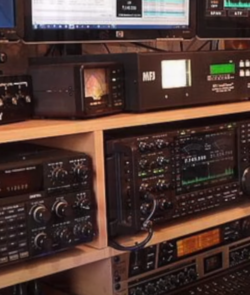 Paul Rogers and Allen Chance, W2BUZ, have co-written -- and Rogers has produced a
Paul Rogers and Allen Chance, W2BUZ, have co-written -- and Rogers has produced a .jpg) The virtual
The virtual .jpg) kHz CW. The Alexanderson Grimeton Association is planning for two broadcasts from the circa-1924 Alexanderson alternator.
kHz CW. The Alexanderson Grimeton Association is planning for two broadcasts from the circa-1924 Alexanderson alternator.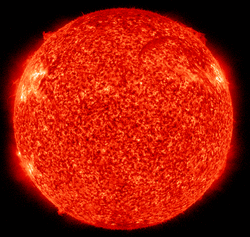 from 9.7 to 6.1.
from 9.7 to 6.1..jpg)








